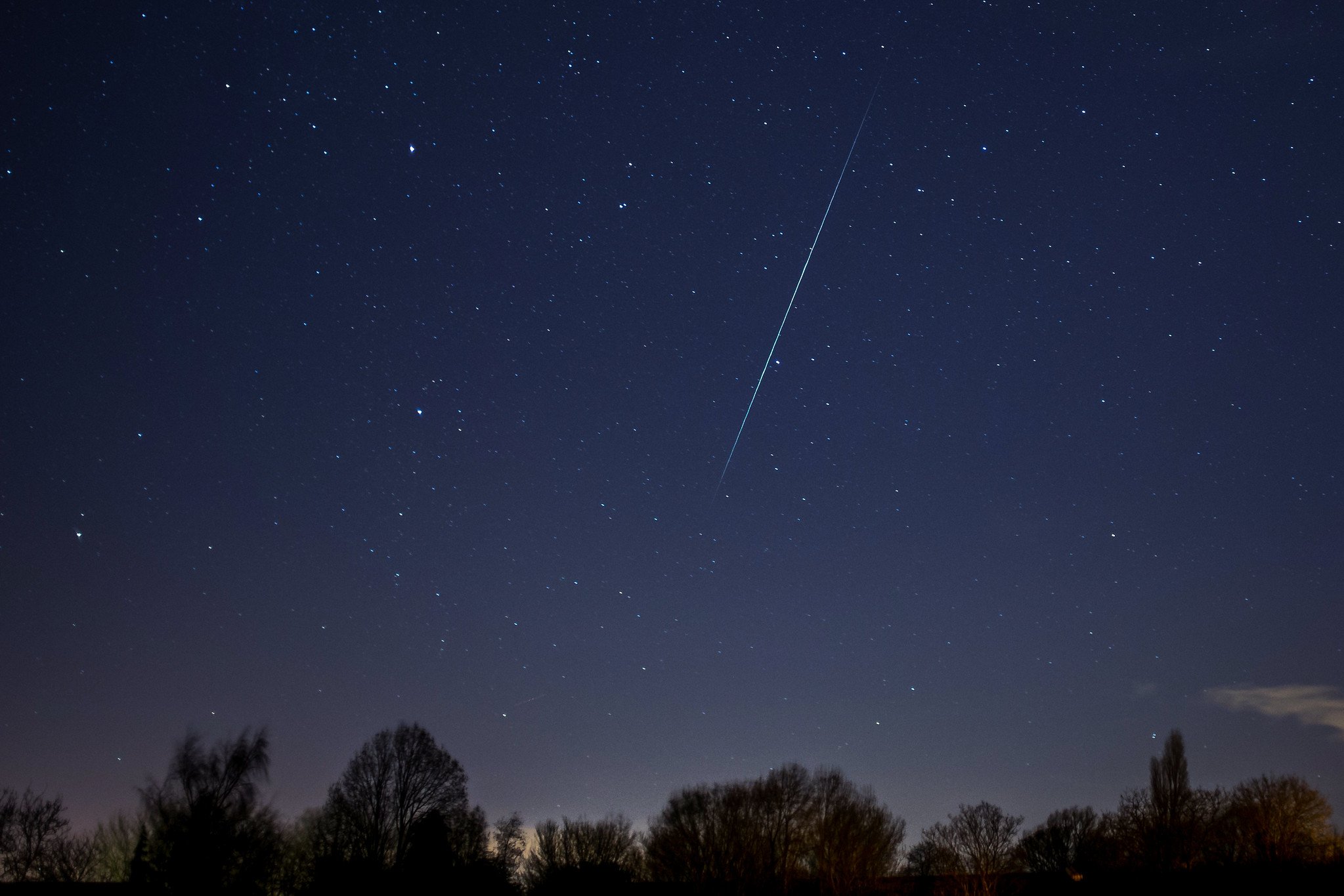As many as 120 meteors an hour will streak across the sky this week, creating brilliant tails of light, as part of the annual Geminid meteor shower, considered “one of the best and most reliable” of the year, according to NASA. With the help of Shauna Edson, astronomy education specialist at the National Air and Space Museum, here’s what to know about this week’s celestial event:
The best time to see it:
The Geminids—named because they appear to radiate from the constellation Gemini—are expected to peak Wednesday night and into early Thursday morning. That’s when we (as in Earth) will enter the densest area within a trail of space debris created by a rocky object known as 3200 Phaethon, says Edson. Though the best times for seeing the event are late at night and into the predawn hours, viewers can usually start spotting the “shooting stars” once skies turn dark.
Lucky for us earthlings, tomorrow’s nearly invisible new moon will set the stage for even darker skies than normal, and thus, even better viewing conditions compared to previous years.
What makes this meteor shower special:
While most meteor showers originate from comets, which are largely made of ice, the Geminids originate from an asteroid, which is mostly made of rock. “What that means for the meteor shower is that the pieces that come off of the asteroid are denser and more solid than the dust grains that usually come off a comet,” says Edson. In effect, “they tend to hold together for longer in the Earth’s atmosphere, and they tend to make brighter, more visible meteors.”
Incredibly, she adds, those flying asteroid bits are, on average, around the size of a grain of sand. They also travel at mind-boggling speeds: around 80,000 miles per hour—or more than 20 miles per second. “The incredible energy of the speed as they move into the atmosphere makes enough light that we can see it in the dark sky,” says Edson.
Despite their dazzling display, the Geminids don’t seem to be as well known as August’s popular Perseids meteor shower. What’s up with that? One reason, says Edson, might simply be because they take place during winter rather than the balmy days of summer when people are more likely to be out late.
How to see the shower:
For those who’d like to watch the Geminids, all you need is the naked eye and a dark, wide-open space. Ideally, you’d want to be as far from the city as possible, but because that isn’t feasible for a lot of people, Edson says a large field or park without street or house lights can work, even if you’ll see fewer meteors.
“The most important thing you can do is get away from city lights, or at least from street or house lights that are directly in your eyes,” says Edson. “That will help your eyes adjust to the darkness and make it much easier to detect these faint quick things in the sky.”
Because this is a winter meteor shower, don’t forget to bundle up, bring blankets or even sleeping bags, as well as hot chocolate and snacks. Then, position yourself so you can see as much of the sky as possible. ”Just try to take in the whole space,” says Edson. “Our eyes will automatically go toward something that is moving or changing, so if you are taking in the whole sky and a meteor happens, your eyes will go to it.”
What else to look out for:
Pay attention to the color of any meteors you see. While most of Geminids meteors are white or pale yellow, they’ll occasionally flash a different color too, which often indicates what chemicals or elements they’re made up of. Yellow tends to indicate sodium; green may indicate magnesium,* says Edson.
While watching for meteors, Edson also recommends taking time to admire other bright celestial bodies, such the constellation Orion, who is easy to identify this time of year, or Jupiter, which is currently visible in southeast part of the sky and “brighter than any star,” says Edson.
As she puts it: “A meteor shower is a really great excuse to just go and view the sky. Whether or not people see any meteors, if they can find Jupiter or the Big Dipper or Orion, hopefully they will have some fun sky gazing and staying warm as they watch.”
*This article originally misstated that green meteors indicate calcium. In fact, they tend to indicate magnesium.












